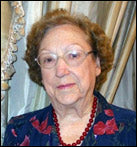 This is part two of a three-part series on tutoring by guest blogger Geraldine Haggard, author of
our Kaleidoscope Series
books
Helpers
,
Four Seasons
,
Seeds
, and
What Is a Friend?
To see her other posts, click here
!
This is part two of a three-part series on tutoring by guest blogger Geraldine Haggard, author of
our Kaleidoscope Series
books
Helpers
,
Four Seasons
,
Seeds
, and
What Is a Friend?
To see her other posts, click here
!
Tutoring Young Readers
SELECTING WHAT TO READ
The first selection should be something the child has already read with some success. There should be no more than five errors out of a hundred words for this reading. This can help motivate the child and let you see how the child approaches the task. The new reading comes last. Study the book being considered, and ask yourself the following questions:
* What is the readability level of the book?
* Is there a core of sight words in the book that the child has read in other books and recognizes?
* Are there words with phonetic patterns that the child knows from other book?
* Does the book provide opportunities for the child to practice a needed phonetic pattern?
* Are there opportunities to practice, on his level, phonetic patterns used in previous books?
* What verb forms are used in the book? Be sure you introduce the book using the verb tense from the book.
* Determine the readability level of the book.
* Study the language of the book. Are there words you feel the child is not able to use in his expressive language? (Nonsense words, etc.)

INTRODUCING A NEW BOOK
Suggest that the child look through the book and ask questions. Invite him to predict what may happen. Plant new vocabulary word in his mind and ask him to find and frame the word. Use correct tense of verbs in book.
HINTS FOR LISTENING TO THE READING
Always wait before giving the child an unknown word. The child needs to accept the responsibility for a new word. The following questions may help:
* What do you know about that word?
* What is the beginning sound? Move your finger across the word and give it a try.
* Use the beginning sound and try something. Did what you tried make sense?
* Can you cover part of the word that you recognize? (Saying that word part may help the child read the word.)
Make a note of words that you give the child or that are read unsuccessfully; these are possible teaching points.
WHAT IF READING IS UNSUCCESSFUL?
Ask the child to read with you, or to follow as you read. The book is probably at the wrong level. Use the book again later, but do not use as a familiar book for rereading. If reading is word by word, read a page showing the child how to read with expression. Ask the child to read the page in that way.
If there are characters who speak, you can read the story as a play and work on fluency and expression. If the child has trouble reading a word that he has read in another book, use the other book to point to that word and then ask him to read the phrase or sentence containing the word.
WAYS TO USE THE CHILD'S ORAL READING TO HELP CHILD AS HE OR SHE READS
You can read a page or paragraph and he or she reads the rest. Whoever reads answers a question asked by the one being tutored. Use the pictures to give clues about what the story will be about. Encourage the child to start a sentence again and try an unknown word using meaning, what sounds right, and what looks right. Work with fluency by modeling fluency and read a story as a play.
HINTS FOR WRITING SESSION
Ask the child to write a sentence/sentences about something the child would like to write about. Ask the child to orally rehearse one sentence at a time. If a child writes about a story he or she read, show him or her how to use the book to check spellings. Ask the child to read what he or she wrote. Invite child to share what he or she feels is not correct.
Use a practice page to practice letter formations, sound boxes, and sight words. Date each writing sample and study the samples to look for growth and special needs. Use special writing techniques such as language experience and shared writing. Using two colors of pens can show the child the difference between what the child wrote and what the tutor wrote.
Asking the child what he or she learned during a session can help you and the child evaluate a session.
~~~
Dr. Geraldine Haggard is a retired teacher, Reading Recovery teacher leader, author, and university teacher. She spent thirty-seven years in the Plano, TX school system. She currently tutors, chairs a committee that gifts books to low-income students, teaches in her church, and serves as a facilitator in a program for grieving children.
~~~
To learn more about the Kaleidoscope Collection series of books, which includes four titles written by Geraldine Haggard, click here to visit the Kaleidoscope page of our website , or click the image below to download an information sheet with highlights of the series.






